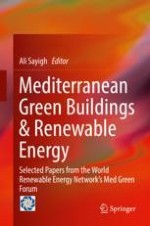2017 | OriginalPaper | Chapter
69. Learning Sustainability from Arab Gulf Vernacular Architecture
Author : Khaled A. Al-Sallal
Published in: Mediterranean Green Buildings & Renewable Energy
Publisher: Springer International Publishing
Activate our intelligent search to find suitable subject content or patents.
Select sections of text to find matching patents with Artificial Intelligence. powered by
Select sections of text to find additional relevant content using AI-assisted search. powered by
